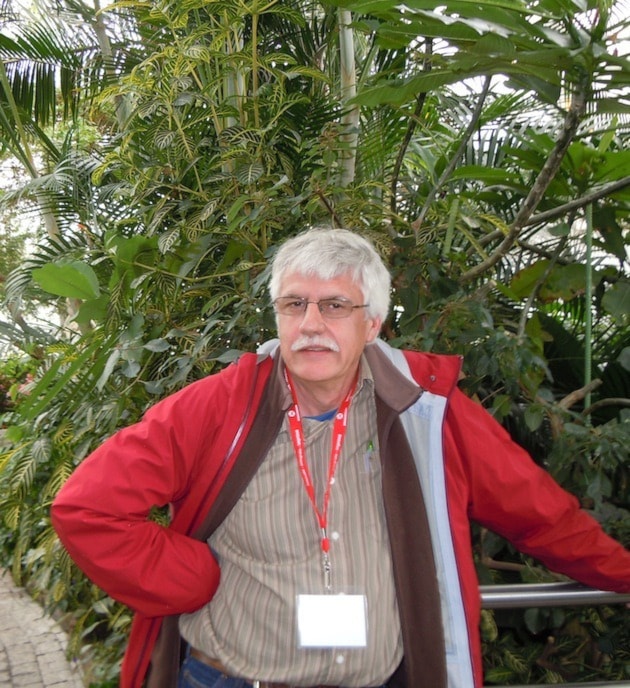In the old days, greenhouse growers would have to climb into protective rubber suits and gloves to spray their crops a few times a week to control pests like aphids, thrips and caterpillars.
But the work of researcher David Gillespie of Chilliwack changed all that.
His entomological discoveries made it so the frequent use of pesticides in greenhouses is now exceedingly rare.
In recognition, Gillespie became one of 11 B.C. residents invested as a member of the Order of Canada.
What he did over the decades was adopt a whole new approach, and a whole new way of looking at the problem. He became an expert in biological controls using parasitic and predatory insects.
"It's an incredible honour," Gillespie said when reached by The Progress about his investiture as a member of the Order of Canada for 2015.
Gillespie was the one who first found two natural enemies that kicked off the era of biological control, the parasitic wasp, and the predatory mite.
It was all about releasing them into the greenhouses, at the right time, in the right ways, in the right numbers to go after pests.
His passion for this work was sparked at the undergrad level. He was profoundly inspired by his university biology professor, Thelma Finlayson.
"She introduced me to entomology, and was adamant about the need for the reduction of pesticides," he said.
Finlayson was influenced by the 1962 book on environmental science, Silent Spring, which warned against the detrimental effects of indiscriminate pesticide use. The book eventually led to the ban in the U.S. on DDT for ag uses, and influenced a whole generation of researchers like Gillespie.
He started his journey at 29, after being handed the considerable responsibility for the working with greenhouse industry on greenhouse entomology.
He was hired in 1982 in Saanich where the research centre at the time was run by Agriculture Canada.
"I was really lucky to come off my PhD studies at Simon Fraser University and go right into a job," he remembered. "At the time the industry was realizing it had to shift away from intensive pest management using pesticides."
Gillespie moved to Chilliwack in 1987, when the program shifted to Pacific Agri-Food Research Centre in Agassiz.
Just as there were scientists working in canola, or tree fruits, or even potatoes, his bailiwick was greenhouse pests.
"The growers in B.C. were very excited," Gillespie remembered. "They were an absolutely fantastic group of innovators who were eager for the new technology, which made life really easy."
Essentially it was taking these natural enemies, from a bug on a leaf that eats other bugs, to developing a full-on package of knowledge that allowed the grower to effectively control the worst pests.
Now instead of climbing into rubber suits to spray the crops, the growers could just release the tiny predators into the greenhouse and let them get to work. They didn't have to even change their clothes to do it.
"These discoveries have been very important in allowing growers to reduce pesticide use on their crops. In some cases to zero," said Gillespie.
Let that sink in for a moment or two. Think of the savings and long-term impacts.
"Now if they spray two or three times a year, it's likely only to control a tiny outbreak on part of the crop."
Over the years, he's had a few moments to savour the sweetness of it all.
"Like most research scientists, I have felt good about what I've done throughout my career.
"One of the joys of working for Agriculture Canada is that you know you are making a positive contribution."
It's a big deal to get the Order of Canada, he figures.
"It's clear recognition that the things that we do in science and biology do matter in society," he said.
Getting the call was the icing on the cake.
"I really can't get over it. It's a real capstone."
The Order of Canada is the nation's highest honour, established in 1967 by Queen Elizabeth II, to recognize those who have enriched the lives of others and made a difference in some vital way from all sectors of society.
He was going over his latest manuscript at the office when he got the call a few weeks ago. He was being named to the Order of Canada.
"It came totally out of the blue," Gillespie said.
The congratulatory calls and emails have been flooding into Gillespie's office at the research station (PARC) in Agassiz ever since.
